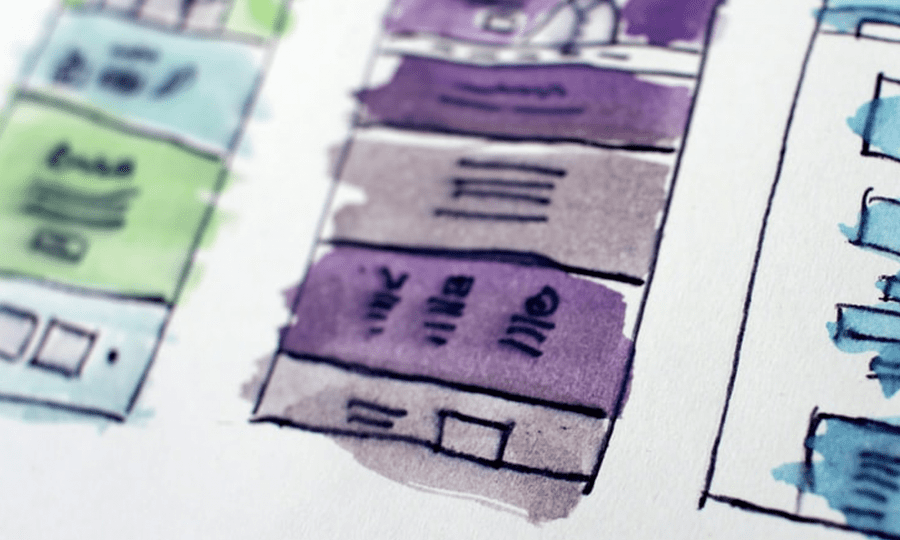You’ve spent countless hours and unending effort creating a great user experience – and then you need to localise it for a different language and culture. How do you ensure that your users in non-English-speaking markets get the great experience that you intended?
The ideal user experience (UX) would be designed with all the various languages your users need in the markets you serve. But the reality is that often a company grows into new markets faster than planned or into markets they didn’t plan for originally. As your company scales, it’s easy for localisation to become an afterthought, with translations tacked onto a structure built for English and little or no attention given to the context of the text.
At Sandberg we have many years of experience partnering with online businesses and creating localised content that delivers the same high-quality experience, tone and delight in translation as in the original. In order to achieve this, there are at least three important points that must be taken into consideration.
1. Context – is your UX copy written with only English in mind?
Consider a common sentence string that appears on a website:
Your [X] is ready
The “is” at least indicates that the X here is a singular item. But “your” in different languages can be your singular or plural. In some languages, like Norwegian, the form will also change depending on the grammatical gender of the item X, i.e. din or ditt (or deres, if plural). The same is true of “ready”, which could be klar or klart depending on the grammatical gender. If the “is” is not reliable and could be 2 items, then klar becomes klare, the plural form of the adjective.
We recommend that you supply whatever reference materials you have that could be relevant, such as PDFs, screenshots and links to your existing website or social media posts.
The solution to these challenges has been identified by marketing expert Nataly Kelly, Head of Localization at HubSpot. She points out that, “Whatever you can do to provide context to your linguistic talent will yield hugely better results […]” http://www.tbcredit.ru/zaymyi.html. In other words, context is key: we’ll work very closely with you to make sure that the context in which your text appears is fully understood and will work as you intended. Where possible, we use translation tools where descriptions of the text’s function appear next to the text to be translated, and in some cases the tool may have a context view, where the translated text with examples of the X in question will show up, to see if the sentence still makes sense in the translated language.
To increase the overall quality of the translation and reduce unnecessary back-and-forth, we recommend that you supply whatever reference materials you have that could be relevant, such as PDFs, screenshots and links to your existing website or social media posts. This enables our translators to understand where the text fits into the relevant part of your user experience.
If we still need more context, we will raise a query with you to get the required information. This is always better than producing a nonsensical or potentially dangerous mistranslation.
2. Localising correctly
There are many elements to get right when you adjust a user experience to new markets.
Firstly, different businesses have different voices, i.e. styles of expressing themselves in writing. A streaming service directed at a youthful audience may have a profoundly different tone to a travel booking service for business executives. If you don’t provide detailed instructions, your carefully crafted copy may suffer changes during translation that could potentially undermine your brand and corporate image. In the best-case scenario, you’ll fail to connect with your target audience. In the worst, you will upset or even offend them.
You may want to keep a playful tone, such as Hey [X]! What’s up? Our linguists rely on their experience and cultural knowledge to judge what exact words or phrases in the target language will convey the same sense of formality, without going too far for that culture. They’re able to do this in part because many of them live in the target country, and because the bulk of our translation work is performed by linguists we directly employ. Another advantage for you is that you can use the same appointed linguist – if you’re happy with a particular translator’s style and quality, you can use them again and again.
And for any business looking to make money, currency will be a consideration. Often this is already handled in your code, with currencies changing automatically according to the country of the user. But the format in which the currency appears on the page can vary depending on many factors. In English, saying for example that Price per item is £[XX.XX] would be quite common. This would potentially show on a website as £10.50. But simply replacing the “£” for “kr.” would in Scandinavia be wrong for the following reasons:
- Firstly, a space is required between the currency symbol and the value;
- Secondly, a full stop after the currency symbol is usual; and
- Thirdly, the decimal marker should be a comma, not a full stop. A correct version is therefore: 10,50.
Of course, the value would also change, and that is also a consideration.
Additionally, if a more formally correct version is required, then it is fairly common across Scandinavia to use the three-letter ISO 4217 currency code – NOK for Norway, SEK for Sweden, etc., rather than just “kr”. You can find out more about how to deal with numbers, dates and times in our PDF guide.
Getting both the tone and the content correct is crucial for your UX design to work as you intended. Your users’ experience is about so much more than a quick transaction; it’s also about experiencing your company’s voice, style, approach, brand, message and quality – it’s your opportunity to impress. UX that doesn’t work well, or where the text appears nonsensical, is not only annoying to the potential customer, it also tells them something about your commitment to quality.
This could be something as basic as the text on a button fitting within the allocated space. A button on the English site saying, “Restart form?” could, without proper context, be translated as the grammatically correct “Ønsker du å starte skjemaet på nytt?” (Do you wish to start the form again?”). The latter sentence is 28 characters longer than the first and may therefore not fit in the button layout.
This may not only look strange but in some cases, if the text gets truncated, may change the message. In the example below, the only text showing clearly is “Ønsker du å starte”, which means “Do you wish to start”, and that is a far cry from the actual function of the button. This not only makes the user’s experience frustrating, but may lead them to ask ‘well, if the company is sloppy about this, perhaps they are sloppy about other things as well’.
English
Norwegian
Apart from the functional text, product names and descriptions can also suffer if careful, professional attention is not paid to them. Recently, a well-known international business expanding their online offering to the Swedish market saw the use of automatic translation software leading to translations that were not only comically wrong but also potentially offensive. One of the less grievous examples was “trunks”, in the meaning of underpants, being translated as “luggage compartments”. Such mistranslations reflect poorly not only on the host website, but also on the very well-known underwear brand.
3. Understanding your business
At Sandberg, we take the time and effort to learn about your business and to understand what you wish to achieve – not only in terms of hard sales, but also in terms of style, message and branding. Some businesses are of course digital natives – apps or online services that grew out of the ubiquity of the internet and the rise of the smartphone. Others have built or are in the process of digital transformation: building an online presence as an extension of a traditional business model. Whatever the case may be, we have the experience and expertise, as well as the established systems, to make sure that your business is properly supported as it enters new markets.
According to payments company ACI Worldwide, 30–40% of online commerce is conducted on smartphones, and every year for the past five, e-commerce and m-commerce have grown 10% to 20% annually. The coronavirus outbreak has only seen this trend accelerate. During the pandemic, online sales with home delivery increased by 150% from an already high starting point in Norway. In 2018, the Nordic online market was already worth €22.5 billion across the Nordic countries, with Sweden the biggest player, and Norway and Denmark having the highest spend per customer.
It’s clear that this is a market worth tapping into, but there is competition. To win and stand out in a crowded marketplace, you need to keep UX at the core of your product strategy so customers are able to engage with you effortlessly. That means that every label for a tiny button, legend on a product, call-to-action or other instructions must work in a way that feels completely natural and intuitive for a non-English speaker.
That’s where a professional translation provider comes in. UX text translation and localisation are a core part of the services we offer. The deep and broad experience we’re able to offer you – built over many years – means that we’ve developed an approach to UX localisation that works for the user and therefore for you, as you reach out to the user.
A UX-friendly localisation strategy focuses on the importance of research: both to gain a full comprehension of your business or service, but also to understand your users and the market segment you’re trying to connect with. Our translators are trained in conducting research and support one another in finding the key to unlocking a tricky translation or enabling deeper knowledge about a product or service. Our specialist translators have both the breadth and depth of expertise within such fields as medicine, law, finance, engineering, marketing and more.
Whichever provider you choose, make sure you find a partner who is sure to translate your product’s user experience into sheer user delight.




